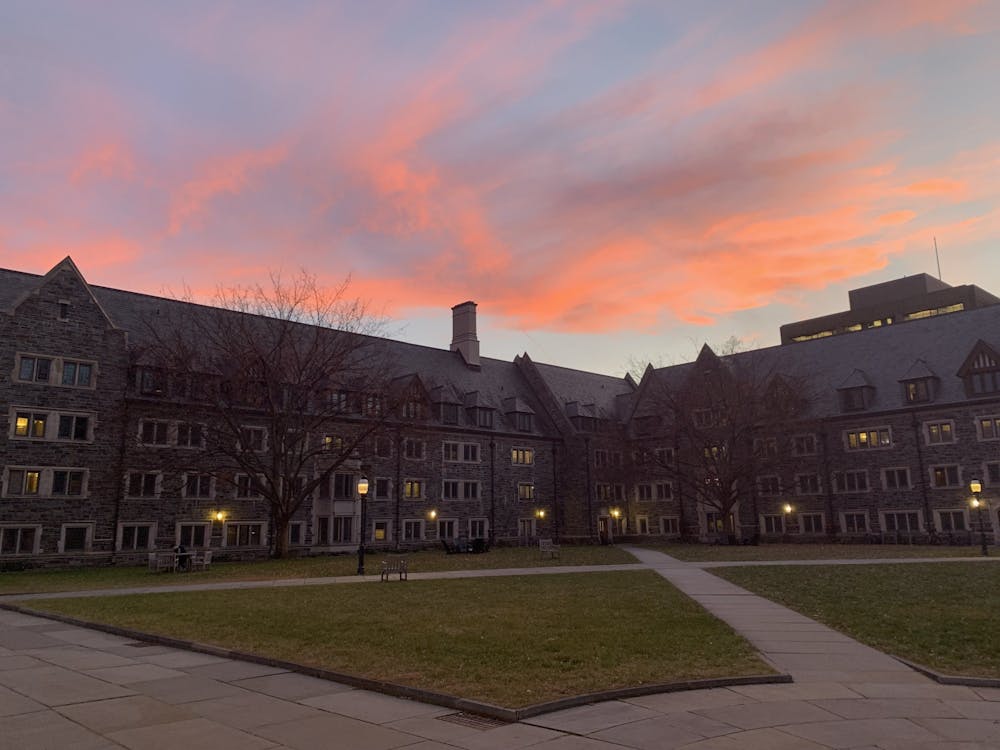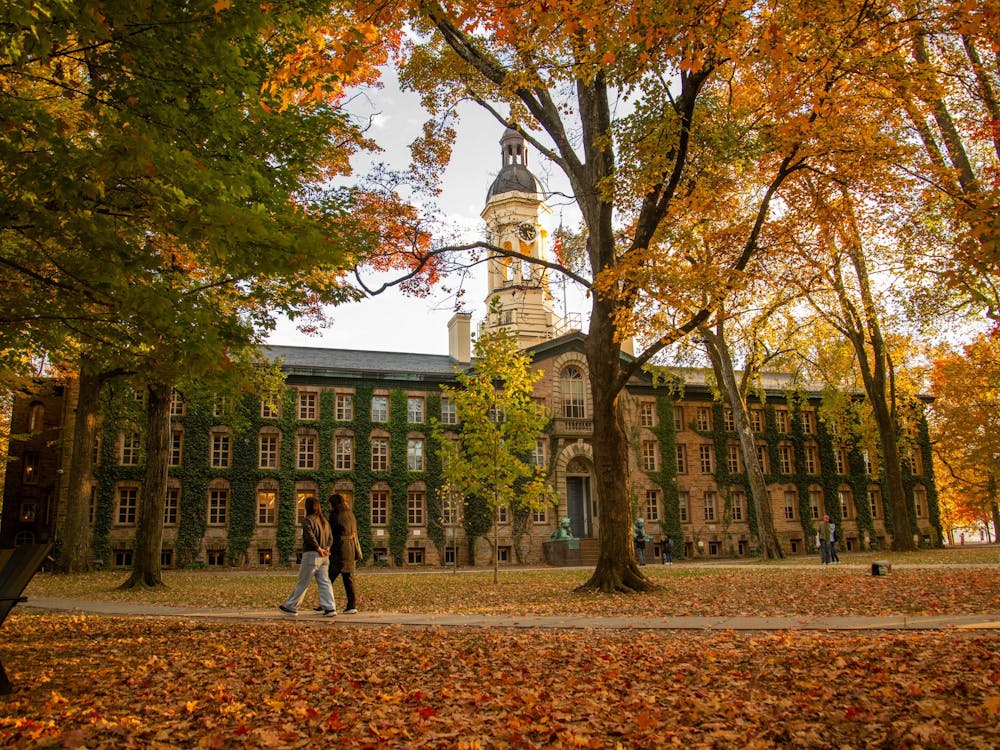Carved above an entrance to McCosh Hall — a building that has become a venerable emblem of the institution it has served for more than 120 years — is a poem by H.E Mierow, Class of 1914: “Here we were taught by men and gothic towers democracy and faith and righteousness and love of unseen things that do not die.”
To be taught by towers — it’s a strange image. Yet it affirms a feeling intuitive to any member of the roughly thirteen generations who have roamed this campus over the past quarter-millennium: there’s a spiritual dimension to Princeton's most celebrated buildings that transcend their practical, or even aesthetic value.
Robert Mohan ’26’s “Love Letter to Princeton’s Contemporary Architecture,” was an eloquent and admirable defense of the “gray masses”: the University’s newest additions of Yeh College and New College West, along with its sprawling plans for Hobson College, a new Health Center, and a new Art Museum. These are all sterile designs which diverge from Princeton’s Collegiate Gothic tradition. Mohan argues that the “the new style disengages from traditional footprints and facades to draft a novel visual language for Princeton.” These new hulking, austere blocks of gray cement, Mohan argues, take “assertive aesthetic risks.” That they do.
I acknowledge the privilege of living and learning in these contemporary buildings. Every student should feel grateful to live in up-to-date and well-resourced facilities, and these facilities do contain some notable elements of beauty. They have the misfortune, however, of sharing a campus with some of the most beautiful collegiate architecture in the world.
In the debate between ‘old style’ and ‘new style’ buildings on campus, Princetonians must consider three imperatives: aesthetics, practical function, and the cultural effect produced from the interaction of the two.
Some may be compelled by the novelty of the new buildings’ style — their unique configurations, random splashes of color, and clean, sharp edges. However, if one were to survey students, professors, administrators, alumni, a random child, or a local squirrel, I think they would resoundingly opt for Blair Courtyard over New College West in a contest of beauty alone. Moreover, the old style has proven timeless. Butler College’s construction followed the contemporary architectural trends of its time, and just forty years later, it looks outdated. It’s not hard to imagine these new buildings meeting the same fate. The collegiate gothic style, meanwhile, was introduced in England some 900 years ago, and we still find it beautiful. When couples start taking wedding photos outside of Yeh’s “Signature Yellow Space,” I’ll measure my confidence. Until then, I think it’s fair to say that, aesthetically, the old style wins out.
Aesthetic value, however, is only one component of architecture. Buildings must also have utility. Most of the collegiate gothic buildings on campus were built in the late 19th and early 20th centuries, and it’s true that they don’t meet some standards we now expect of our facilities: accessibility, temperature control, environmental sustainability, et cetera. This, of course, is to be expected. These criteria were either infeasible or were not even considered at the time. I see no reason, however, why the collegiate gothic style itself is inherently incompatible with these goals. Older buildings on campus don’t meet modern standards for functionality because the youngest of them are a century old. New buildings in the collegiate gothic style, however, can be reconciled with modern criteria. Take, for example, the new all-electric VW hippie van.
We have a model in Whitman College, which combines traditional style with modern utility.
Mohan calls Whitman an “unsuccessful hybrid” that “does not form a confident aesthetic assertion.” The indictment rests on his observation that Whitman isn’t adorned with the same embellishments and grandeur of the older designs such as Rockefeller and Mathey Colleges.
That’s true. The most ornate features of the old buildings — the archways, intricate carvings, stone figures and the rest — were built by a force of low-wage, trained stonemasons and craftsmen that are rare today. Those features would be unjustifiably expensive in today’s Princeton.
Yet even without those details, Whitman is a strikingly beautiful collection of buildings and courtyards that manage to meet contemporary standards of functionality, accessibility, and sustainability. It proves that it is possible to incorporate wide halls, air conditioning, common rooms, and plentiful bathrooms in a collegiate gothic style building. It may not have gargoyles, but Whitman nonetheless demonstrates that traditional beauty can coexist with practical function.
The most important aspect of this conversation is the intersection of aesthetics and practical design: the individual and communal effect which architecture produces. Architecture is both a reflection and a reinforcement of our cultural priorities. As Churchill said, “we shape our buildings and thereafter our buildings shape us.” The new constructions do reflect a positive evolution of institutional values: openness instead of exclusivity, collaboration instead of competition, community instead of cliques. They reflect an earnest effort to emphasize a more modern, inclusive, and healthy campus culture at a university with a reputation for a sometimes toxic brand of elitism. However, the values promoted by the old style of architecture — wonder, aspiration, and growth grounded in reverence for tradition — are admirable as well, and don’t preclude the fostering of new values.

In the words of Demetri Porphyrios, Whitman’s architect, the college “continues and furthers Princeton’s tradition of collegiate campus life that is conducive to social interaction while fostering the values of leadership.” The continuity of the collegiate gothic style connects all of us to a heritage of intellectualism and excellence. It imbues students with the sense that they are successors of tradition, next up in a storied lineage of thinkers, changers, and leaders. Students a century ago could not have imagined the rich diversity that now makes up the Princeton community, but each of us are connected to past generations of Princetonians by a feeling when we walk through the brownstone courtyard of East Pyne: that we’re in an extraordinary place to pursue extraordinary things. Walking through those arches, you understand how towers may teach a love of unseen things that never die.
Leighton McCamy-Miller is a sophomore from Mill Valley, Calif. He is a prospective politics major. He can be reached at lm1879[at]princeton.edu.








